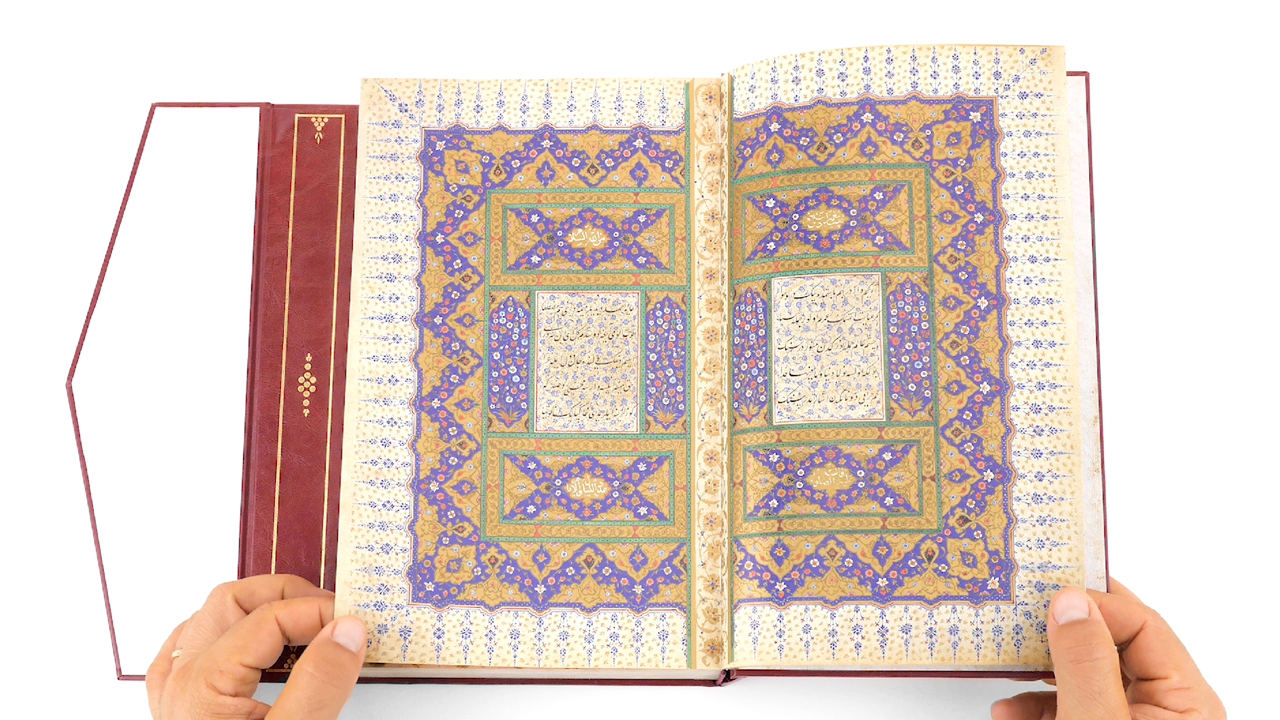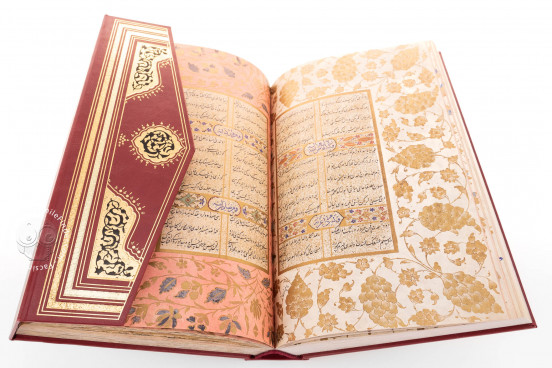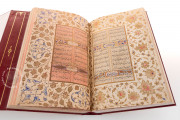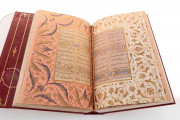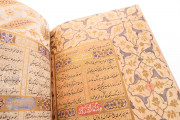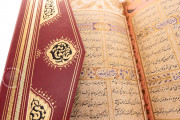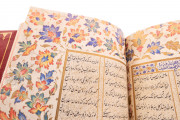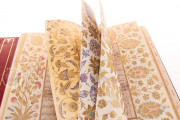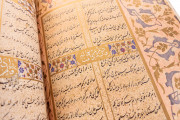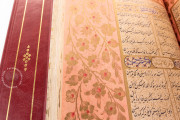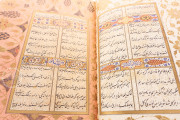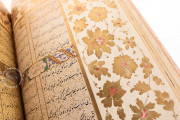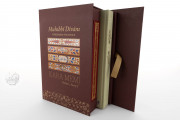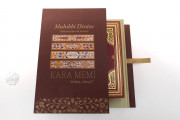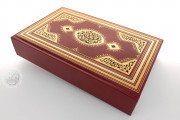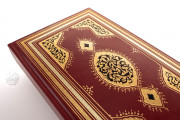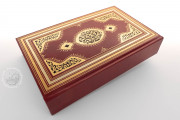With its love poems by Sultan Suleiman and floral illuminations by the distinguished artist Kara Memi, the Muhibbi Divanı stands out as one of the greatest sixteenth-century Ottoman literary works, crafted in Istanbul in the year 1566. The gold and silver decorations, known as koltuk and halkâr, are never repeated throughout the 370 folios, and the intricate Arabic script tells the story of a woman as tall as a cypress, with cheeks as red as roses, whose value is as great as the entire Ottoman Empire.
A Poem of Love, Enveloped in Flowers
The work includes 1552 decorated panels known as koltuk, and gold decorations known as halkâr. The koltuk panels are usually rectangular and arranged in pairs on the sides of the poem's title, while the halkâr decorations consist of shading and occasional highlights in colors other than gold. In some cases, the area beneath the text is also decorated.
The halkâr decorations owe their beauty to the colors, mainly in the tones of gold and silver, and to naturalistic flower motifs such as roses, hyacinths, tulips, carnations, spring blossom, anemones, calendulas, hollyhocks, violets, and lilies. Although their painter, Kara Memi, was a great observer of nature, his illuminations also include unidentifiable stylized plants and flowers.
The Unique Naturalistic Style of Kara Memi
During his reign (1520-1566), Sultan Suleiman established the "Golden Age" of the Ottoman Empire, with major developments and innovations in arts, literature, and architecture. Kara Memi's floral style reflects the great interest in gardens and flowers of the time, as is also evident in the plant motifs of Nasuh es-Silahî's Menazilname.
Kara Memi, cognomen of Mehmed Çelebi, was one of the greatest students of Şahkulu, and emerged as the head painter of the imperial Ottoman painting studio in 1557. He established a new naturalistic style that quickly influenced other arts such as ceramics, rugs, and tiles, and continued to shape Ottoman art for centuries.
Precursors of Kara Memi include the Menazilname master Matrakçı Nasuh, who introduced a fully new style of Ottoman pictorial art, Kara Memi's teacher Şahkulu, and the fifteenth-century artist Baba Nakkaş, who flourished under the reign of Sultan Mehmed II (1451-1481).
The manuscript, commissioned by Sultan Suleiman the Magnificent, was originally taken from Topkapı Palace Library to Yıldiz Palace Library, and then on Atatürk's orders transferred along with the entire contents of this library to Istanbul University Library, where it is currently stored.
The current binding of dark red leather with medallion design is not original. The first binding was replaced at an unknown date, using off-white European paper with a moiré pattern used to line the covers. At the same time, the edges of the folios were trimmed, as revealed by the incomplete halkâr motifs on some of the pages.
We have 1 facsimile edition of the manuscript "Muhibbî Dîvânı": Kara Memi facsimile edition, published by MASA, 2016
Request Info / Price
